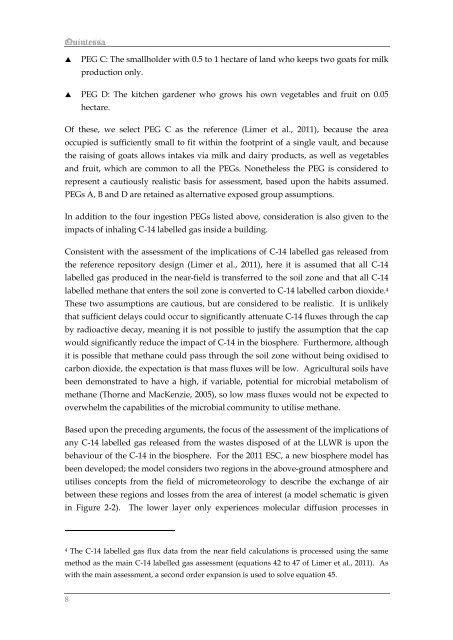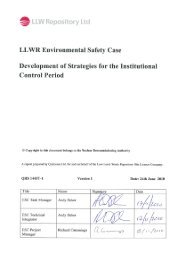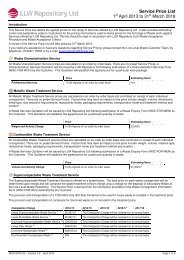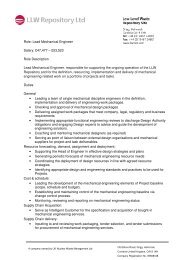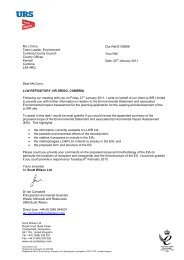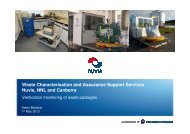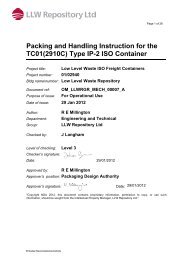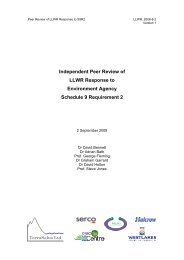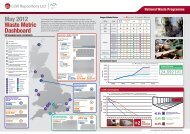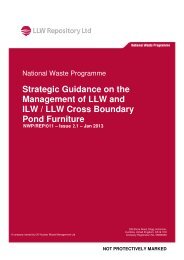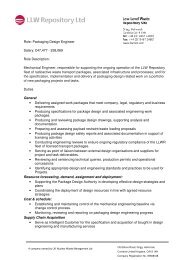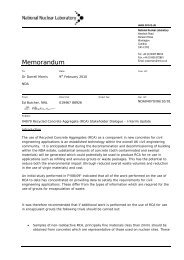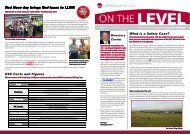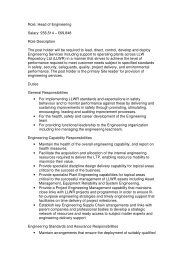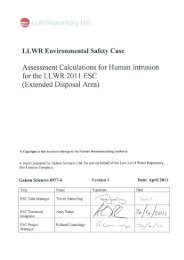Limer LMC, Assessment Calculations for C-14 Labelled Gas and ...
Limer LMC, Assessment Calculations for C-14 Labelled Gas and ...
Limer LMC, Assessment Calculations for C-14 Labelled Gas and ...
You also want an ePaper? Increase the reach of your titles
YUMPU automatically turns print PDFs into web optimized ePapers that Google loves.
PEG C: The smallholder with 0.5 to 1 hectare of l<strong>and</strong> who keeps two goats <strong>for</strong> milkproduction only. PEG D: The kitchen gardener who grows his own vegetables <strong>and</strong> fruit on 0.05hectare.Of these, we select PEG C as the reference (<strong>Limer</strong> et al., 2011), because the areaoccupied is sufficiently small to fit within the footprint of a single vault, <strong>and</strong> becausethe raising of goats allows intakes via milk <strong>and</strong> dairy products, as well as vegetables<strong>and</strong> fruit, which are common to all the PEGs. Nonetheless the PEG is considered torepresent a cautiously realistic basis <strong>for</strong> assessment, based upon the habits assumed.PEGs A, B <strong>and</strong> D are retained as alternative exposed group assumptions.In addition to the four ingestion PEGs listed above, consideration is also given to theimpacts of inhaling C-<strong>14</strong> labelled gas inside a building.Consistent with the assessment of the implications of C-<strong>14</strong> labelled gas released fromthe reference repository design (<strong>Limer</strong> et al., 2011), here it is assumed that all C-<strong>14</strong>labelled gas produced in the near-field is transferred to the soil zone <strong>and</strong> that all C-<strong>14</strong>labelled methane that enters the soil zone is converted to C-<strong>14</strong> labelled carbon dioxide. 4These two assumptions are cautious, but are considered to be realistic. It is unlikelythat sufficient delays could occur to significantly attenuate C-<strong>14</strong> fluxes through the capby radioactive decay, meaning it is not possible to justify the assumption that the capwould significantly reduce the impact of C-<strong>14</strong> in the biosphere. Furthermore, althoughit is possible that methane could pass through the soil zone without being oxidised tocarbon dioxide, the expectation is that mass fluxes will be low. Agricultural soils havebeen demonstrated to have a high, if variable, potential <strong>for</strong> microbial metabolism ofmethane (Thorne <strong>and</strong> MacKenzie, 2005), so low mass fluxes would not be expected tooverwhelm the capabilities of the microbial community to utilise methane.Based upon the preceding arguments, the focus of the assessment of the implications ofany C-<strong>14</strong> labelled gas released from the wastes disposed of at the LLWR is upon thebehaviour of the C-<strong>14</strong> in the biosphere. For the 2011 ESC, a new biosphere model hasbeen developed; the model considers two regions in the above-ground atmosphere <strong>and</strong>utilises concepts from the field of micrometeorology to describe the exchange of airbetween these regions <strong>and</strong> losses from the area of interest (a model schematic is givenin Figure 2-2). The lower layer only experiences molecular diffusion processes in4 The C-<strong>14</strong> labelled gas flux data from the near field calculations is processed using the samemethod as the main C-<strong>14</strong> labelled gas assessment (equations 42 to 47 of <strong>Limer</strong> et al., 2011). Aswith the main assessment, a second order expansion is used to solve equation 45.8


